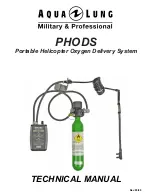
English |
17
Bosch Power Tools
2 609 140 838 | (20.4.11)
Notes:
In the operating mode
“Drywall”
, other objects, apart from wood and
metal objects and “live” conductors are also detected, such as plastic tubing
filled with water. For such objects, the indication
g
for non-metal objects is indi-
cated in display
7
.
Nails and screws in the base material may cause a wooden beam to be indicated
as a metal object on the display.
When display
7
indicates a continuously high amplitude of measuring indicator
f
and measuring indicator
c
, restart the measuring procedure again by positioning
the measuring tool at a different location on the base material.
When the illuminated ring
9
does not signal operational readiness when position-
ing the measuring tool on the base material being detected, the measuring tool
cannot properly detect the base material.
– Press and hold button
1
until the illuminated ring lights up green.
– When starting a new measuring procedure afterwards and positioning the
measuring tool onto a different wall or surface, you must briefly press button
1
.
– In rare cases, the measuring tool may not be able to detect the base material
because the side with the sensor area
11
and the type plate
12
is soiled or
dirty. Clean the measuring tool with a dry, soft cloth and restart the measuring
procedure.
When the indication
k
(non-magnetic metal) or
i
(magnetic metal) is alternately
displayed at a measuring position in operating mode
“Drywall”
, you should
change to the operating mode
“Metal”
, which is better suitable for detecting and
differentiating between magnetic and non-magnetic objects.
Metal
The operating mode
“Metal”
is suitable for detecting magnetic and non-magnet-
ic objects as well as “live” conductors (independent of the wall material).
Press button
6
to activate the operating mode
“Metal”
. The illuminated ring
9
lights up green and indication
j
lights up.
When the detected metal object is of magnetic metal (e.g. iron), the symbol
i
is
indicated on display
7
. For non-magnetic metals, the symbol
k
is indicated. In or-
der to differentiate between metal types, the measuring tool must be positioned
above the detected metal object (ring
9
is lit red).
Note:
For reinforcement steel mesh and steel in the examined base material, an
amplitude is indicated over the complete surface of measuring indicator
f
. For
reinforcement steel mesh, it is typical that the symbol
i
for magnetic metal is in-
dicated on the display directly above the iron rods, whereas between the iron
rods, the symbol
k
for non-magnetic metal will appear.
Scanning for “Live” Wires
“Live” conductors are indicated in any operating mode.
When a “live” conductor is detected, indication
a
appears on the display
7
and
the measuring indicator
c
deflects. Move the measuring tool repeatedly over the
area to localise the “live” conductor more precisely. After moving over the “live”
conductor several times, it can be indicated very accurately. When the measur-
ing tool is very close to the conductor, the illuminated ring
9
flashes red and the
audio signal beeps swiftly.
Notes:
– “Live” conductors can be detected easier when power consumers (e.g. lamps,
machines) are connected to the sought conductor and switched on.
–
Under certain conditions (such as below metal surfaces or behind surfac-
es with high water content), “live” conductors cannot be securely de-
tected.
The signal strength of a “live” conductor depends on the position of
the cable. Therefore, apply further measurements in close proximity or use
other information sources to check if a “live” conductor exists.
OBJ_BUCH-1380-004.book Page 17 Wednesday, April 20, 2011 10:12 AM
















































